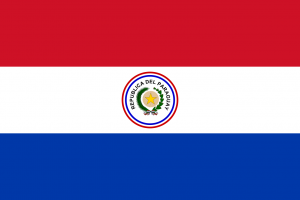Language/Paraguayan-guarani/Grammar/How-to-Use-Have
Hi Paraguayan Guaraní learners! 😊
In this lesson, we will learn how to use "have" in Paraguayan Guaraní. It is a very important verb and can be used in various contexts. By the end of this lesson, you will understand how to use it in the present, past, and future tenses.
Finish this lesson and explore these related pages: Future Tense & Conditional Mood.
Present Tense[edit | edit source]
In Paraguayan Guaraní, the word "have" can be translated as "pe" or "ke". The verb "pe" is used when the subject is inanimate, while "ke" is used when the subject is animate. Here are some examples:
| Paraguayan Guaraní | Pronunciation | English |
|---|---|---|
| Ndajape mborayhu | nda-ha-pe mbo-ra-yhu | I have a beautiful flower |
| Mbo'ehao pe'ỹ | mbo'e-ha-o pe-'y | This house has a garden |
| Guyrape kuéra oiko | gu'yra-pe kue-ra o-i-ko | The book has pictures |
Here, "ndajape" means "I have", "mborayhu" means "a beautiful flower", "mbo'ehao" means "this house", "pe'ỹ" means "garden", "guyrape" means "the book", "kuéra" means "pictures", and "oiko" means "has".
Past Tense[edit | edit source]
To express that something "had" happened in the past, we also use the word "pe". The difference between the present and the past tense is the use of the suffix "-rã" at the end of the verb. Here are some examples:
| Paraguayan Guaraní | Pronunciation | English |
|---|---|---|
| Ndajaperã mborayhukã | nda-ha-pe-ra mbo-ra-yhu-kã | I had a beautiful flower |
| Mbo'ehao pe'ỹrã | mbo'e-ha-o pe-'y-ra | This house had a garden |
| Guyraperã kuéra oiko | gu'yra-pe-ra kue-ra o-i-ko | The book had pictures |
Notice the addition of the suffix "-rã" in the verb. This indicates that the action happened in the past.
Future Tense[edit | edit source]
To express that something "will have" or "is going to have" in the future, we use the verb "ondo" with the suffix "-pe" or "-ke". Here are some examples:
| Paraguayan Guaraní | Pronunciation | English |
|---|---|---|
| Ndaondope mborayhu | nda-ondo-pe mbo-ra-yhu | I will have a beautiful flower |
| Mbo'ehao ondoke'ỹ | mbo'e-ha-o ondo-ke-'y | This house is going to have a garden |
| Guyraondope kuéra oiko | gu'yra-ondo-pe kue-ra o-i-ko | The book will have pictures |
The verb "ondo" means "to go" and it is conjugated as "nda-ondo" for the first person singular, "ko-ondo" for the second person singular, and so on. The suffix "-pe" or "-ke" still follows the subject.
Dialogue[edit | edit source]
Person 1: Hete mba'evera ko'ãga rupi (Did you have lunch today?)
Person 2: A'epe, peteî arroz ñembotavy (Yes, I had rice with meat).
Person 1: Ha'ekuéra oî peteî? (Did you also have vegetables?)
Person 2: Mba'e oî, avei peteî chipa (No, but I had chipa)
Here, "hete" means "today", "mba'evera" means "did you have", "ko'ãga" means "lunch", "rupi" means "today", "peteî" means "I had", "arroz" means "rice", "ñembotavy" means "with meat", "ha'ekuéra" means "also", "oî" means "vegetables", "mba'e" means "no", and "chipa" means "a typical Paraguayan bread made of corn flour".
Conclusion[edit | edit source]
In conclusion, the verb "have" is very important in Paraguayan Guaraní and can be used in various contexts. To improve your Paraguayan Guaraní Grammar, you can also use the Polyglot Club website. Find native speakers and ask them any questions!
➡ If you have any questions, please ask them in the comments section below.
➡ Feel free to edit this wiki page if you think it can be improved. 😎
Upon wrapping up this lesson, take a look at these related pages: Give your Opinion & Adjectives.
Other Lessons[edit | edit source]
- How to Use Be
- Questions
- Give your Opinion
- Future Tense
- Pronouns
- Negation
- Adjectives
- Plurals
- Conditional Mood

